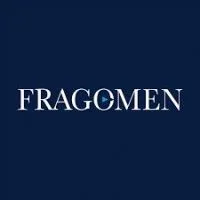- within Family and Matrimonial topic(s)
At a glance
- This month, U.S. Citizenship and Immigration Services (USCIS) is expected to publish a final rule implementing the second phase of its H-1B program modernization plan, which is expected to include the revision of key H-1B program terms and address F-1 cap-gap protections, among other changes.
- U.S. Customs and Border Protection is continuing to move ahead with its plan to impose the $4,000 or $4,500 9-11 Response fee on a larger number of H-1B and L-1 petitions, with a final rule scheduled for April 2025.
- DOL has moved the proposal to expand the list of labor-certification-exempt (Schedule A) occupations to its long-term agenda, suggesting that the agency is no longer actively pursuing this initiative.
The issue
The Departments of Homeland Security, Labor, and State have issued their new regulatory agendas, which set forth each agency's rulemaking priorities and timelines for the coming months.
The following summarizes key employment-based immigration items on the agencies' agendas. The details of proposed and final regulations are confidential until each regulation is released for publication. Although each agency sets projected publication dates for its regulatory activities, it is common for agencies to bypass these estimates. After President-Elect Trump is inaugurated on January 20, many aspects of the agency agendas are expected to change; however, some regulatory initiatives may remain on course where they align with the incoming administration's priorities.
Department of Homeland Security
Final regulation on modernization of the H-1B program. As we have reported, a final regulation that is anticipated to make several key substantive changes to the H-1B program is currently under federal review. As proposed, the rule sought to revise the definition of the H-1B specialty occupation, strengthen cap gap protections for F-1 students awaiting a change of status to H-1B, strengthen USCIS's site visit authority, streamline the processes and requirements for amending nonimmigrant petitions, and codify the agency's longstanding policy of deference to its prior approvals. The regulation could clear federal review and be published in the coming days.
Final regulation on improvements to H-2A and H-2B temporary worker programs. The DHS is set to finalize a regulation that, as proposed, would add new H-2A/B employer obligations and worker safeguards and would provide new and expanded grace periods before and after petition validity, after cessation of employment, and following revocation of an approved petition. The regulation is also expected to provide a worker the ability to begin new H-2 employment upon the proper filing of an extension of stay petition, rather than requiring them to await petition approval. In addition, the final rule could grant USCIS the authority to approve H-2 petitions for nationals of countries beyond those specifically designated by DHS. The final rule has cleared federal review and is expected to be published in the Federal Register in the coming days or weeks.
Final regulation on expansion of the H-1B/L-1 border security fee. DHS continues its plan to finalize a regulation to expand the U.S. Customs and Border Protection (CBP) 9-11 Response and Biometric Entry-Exit fee (9-11 Response fee) imposed on employers with more than 50 employees in the United States in H-1B or L-1 status, more than 50 percent of whom are in H-1B or L-1 nonimmigrant status. Currently, H-1B and L-1 petitions filed by these employers are required to include the additional $4,000 (H-1B) or $4,500 (L-1) 9-11 Response fees only in petitions for an initial grant of H-1B or L-1 status or a change of employer in the same status (including where an extension of stay is requested). The forthcoming rule is expected to expand the fee to extensions of stay filed by subject employers. It remains slated for publication in April 2025.
Proposed adjustment of status process changes. A proposed rule that has been on the Biden Administration's regulatory agenda through several cycles would seek to improve various aspects of the adjustment of status process, including clarifying when a visa becomes available for purposes of age-out protections under the Child Status Protection Act, permitting the agency to grant employment authorization to derivative beneficiaries with compelling circumstances who are awaiting immigrant visa availability, and clarifying travel authorization for persons granted Temporary Protected Status. The proposed rule, last slated for publication in August 2024, is now projected for January 2025.
Proposed codification of certain aspects of 2022 EB-5 legislation. A forthcoming notice of proposed rulemaking would seek to codify elements of the EB-5 Reform and Integrity Act of 2022, alongside a separate proposed rulemaking to increase certain EB-5 fees. In 2017, DHS published an advance notice of proposed rulemaking that sought public comment on various aspects of the EB-5 Regional Center Program, including applications, program oversight, and monitoring. Though some of these issues were addressed in the 2022 legislation, the forthcoming proposal is intended to address some of the recommendations made in response to the 2017 request for public feedback. The fee proposal is anticipated in February 2025. A notice of proposed rulemaking on other elements of the Regional Center program is slated for April 2025.
Department of State
IV Appearance Waiver. The State Department still plans to issue a final rule that would permit a waiver of the requirement for immigrant visa (IV) applicants to appear before a consular officer. Details of the rule, including eligibility parameters, are not yet known. After being postponed several times over the last year, the rule is now slated for publication in December 2024.
Proposed DV Program Amendment. The agency also plans to propose an amendment to Diversity Visa (DV) immigrant visa regulations that would require applicants to provide valid, unexpired passport information in their online diversity visa registration form. The proposal is slated for publication in March 2025, delayed from December 2024. It is possible and perhaps likely that the Trump administration will move forward with this proposed rule after taking office in January 2025, given that it restricts eligibility for the Diversity Visa lottery, a program about which the prior Trump administration and his current advisors have been critical.
Proposed Public Charge Rule. A proposed rule on public charge inadmissibility is slated to be issued in February 2025. The rule would codify current practice and align State Department legal authority with the current DHS public charge rule. However, the Trump Administration has a history of a far more restrictive approach to the public charge ground of inadmissibility and is unlikely to move forward in aligning the Department of State with the Biden-era DHS public charge rule, after taking office in January.
J-1 program changes. An interim final rule increasing the maximum J-1/J-2 Exchange Visitor health insurance deductible, among other changes to the J-1 health insurance requirement, is slated for February 2025. Given that the change would presumably tighten J-1 health insurance requirements, the Trump administration could choose to move forward with the rule after taking office in January 2025. Also slated for February 2025 is a proposed rule that would increase the duration of J-1 academic training permitted for J-1 exchange visitors in STEM fields in certain circumstances. The Trump Administration has been previously critical of J-1 academic training and may remove this from the agenda in January.
This month, the State Department issued a revised J-1 Exchange Visitor Skills List. The revised list – which has retroactive effect – removed almost 30 countries from the prior list, including China, India, Saudi Arabia, South Korea, and the United Arab Emirates. J nonimmigrants who were subject to the J-1 two-year home residency requirement based on the previous Skills List will no longer be subject to that requirement if their country is not designated in the revised list. However, the incoming Trump Administration could take steps to further revise or roll back the new Skills List revision.
Department of Labor
Proposed Revisions to Schedule A. The Department of Labor (DOL) has moved this initiative to its long-term regulatory agenda. The list of labor-certification-exempt occupations – known as "Schedule A" – currently covers certain professional nurses, physical therapists, and foreign nationals of exceptional ability in the sciences and arts, and DOL was considering possible expansion of the list to include STEM-related and other occupations for which U.S. workers are considered to be in short supply. After soliciting public feedback in December 2023 on the proposed expansion of Schedule A, DOL set an August 2024 target date to complete its review and analysis of the comments received. However, DOL has now moved the initiative to its long-term agenda, with the next action and associated target date labeled as undetermined, suggesting that the agency is no longer actively pursuing this initiative.
Proposed Updates to H-2B Program. DOL has reconfirmed its plans to update the regulations governing the H-2B temporary and seasonal worker program, including the H-2B prevailing wage rules, the temporary labor certification process, and enforcement of H-2B employer obligations. This proposal is separate and apart from DHS's planned final rule to add new employer obligations and worker safeguards to the H-2A and H-2B programs, discussed above. DOL's proposed rule to update the H-2B program, which had most recently been slated for release in April 2025, is now projected for publication in October 2025. The upcoming change in administration is expected to impact whether and when this proposed rulemaking proceeds.
Regulatory timelines and potential impact of a change in administration
The regulatory agenda is an indication of the Biden Administration's agency priorities in the coming month. Most regulations would first be published in proposal form, with a 30- to 60-day public feedback period. Such rules could only be implemented after the Administration gives meaningful consideration to the feedback it receives and the rule then clears a final review by the Office of Management and Budget. The normal rulemaking process takes at least several months. Interim and temporary final rules may be implemented in an expedited manner in some circumstances.
When President-Elect Trump takes office on January 20, 2025, federal agencies under the new administration may decline to pursue some of the proposed rules in the regulatory pipeline and, in some cases, may suspend implementation of newly issued final rules. Agencies could also seek to vacate issued rules through administrative means or, in limited circumstances, through Congress; regulations that align with a new administration's interests could be retained. A new administration would also be expected to introduce new rules that reflect the new president's policy priorities.
The content of this article is intended to provide a general guide to the subject matter. Specialist advice should be sought about your specific circumstances.


